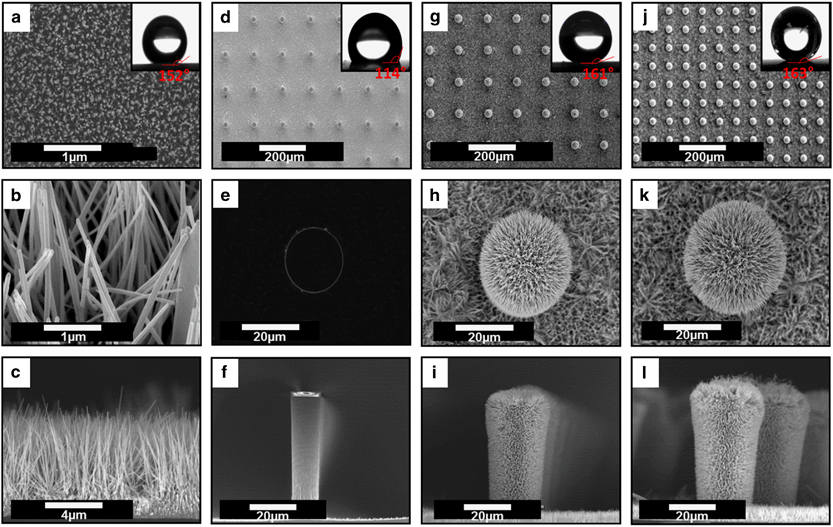
연구
Research Outcome
미래를 창조하는 포스텍 화학공학과
Combining the lotus leaf effect with artificial photosynthesis: regeneration of underwater superhydrophobicity of hierarchical ZnO/Si surfaces by solar water splitting
- Title of paper
- Combining the lotus leaf effect with artificial photosynthesis: regeneration of underwater superhydrophobicity of hierarchical ZnO/Si surfaces by solar water splitting
- Author
- [용기중교수 연구실]
- Publication in journal
- NPG Asia Materials 7, e201 (July 2015)
- Publication date
- 20150717
[Abstract]
Fabrication of stable superhydrophobic surfaces in dynamic circumstances is a key issue for practical uses of non-wetting surfaces. However, superhydrophobic surfaces have finite lifetime in underwater conditions due to the diffusion of gas pockets into the water. To overcome this limited lifetime of underwater superhydrophobicity, this study introduces a novel method for regenerating a continuous air interlayer on superhydrophobic ZnO nanorod/Si micropost hierarchical structures (HRs) via the combination of two biomimetic properties of natural leaf: superhydrophobicity from the lotus leaf effect and solar water splitting from photosynthesis. The designed n/p junction in the ZnO/Si HRs allowed for highly stable gas interlayer in water and regeneration of the underwater superhydrophobicity due to the unique ability of the surface to capture and retain a stable gas layer. Furthermore, we developed a model to determine the optimum structural factors of hierarchical ZnO/Si surfaces that aid the formation of an air interlayer to completely regenerate the superhydrophobicity. We also verified that this model satisfactorily predicted the regeneration of underwater superhydrophobicity under various experimental conditions. The regenerative method developed in this work is expected to broaden the range of potential applications involving superhydrophobic surfaces and to create new opportunities for related technologies.
e201; doi:10.1038/am.2015.74




